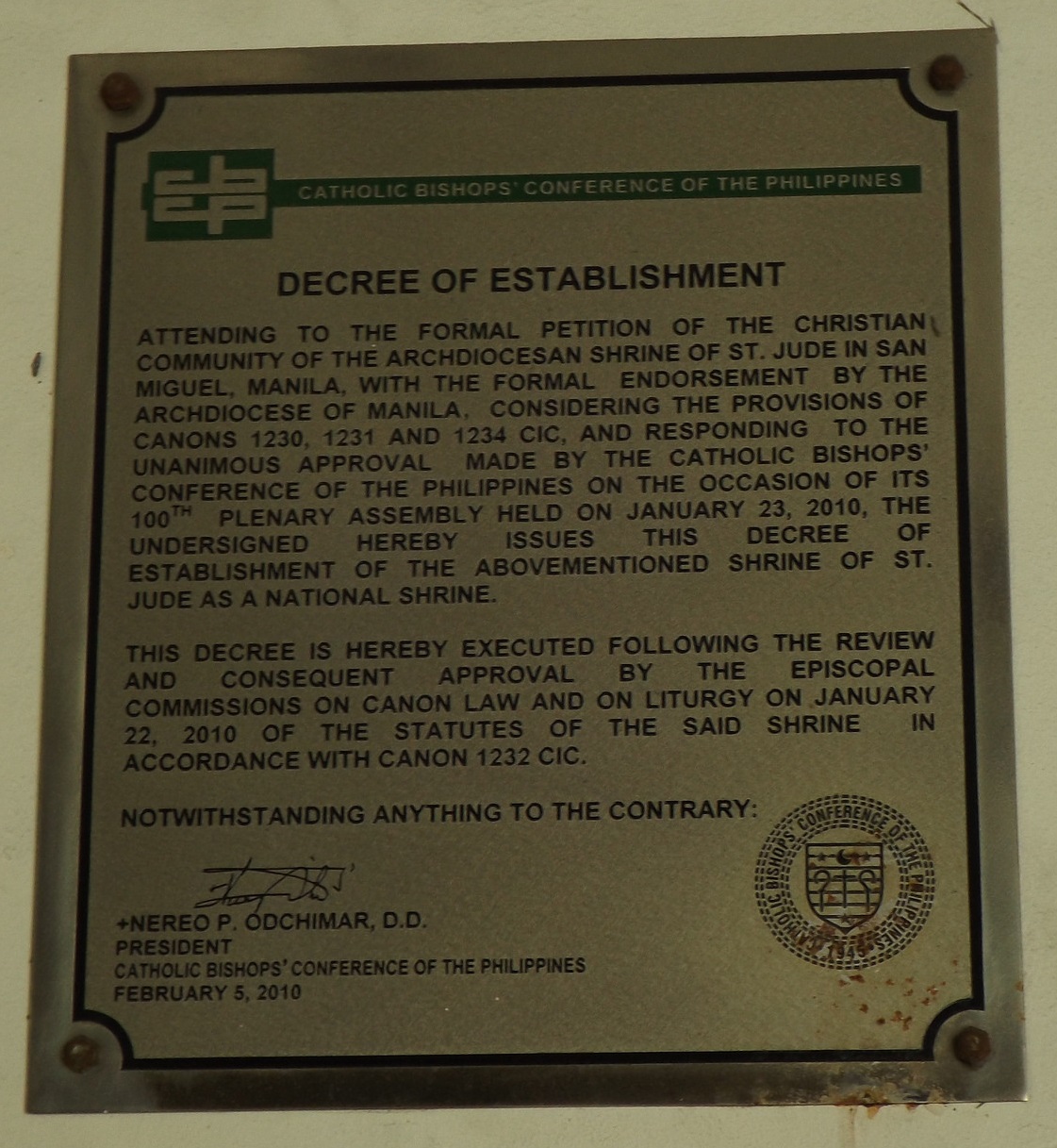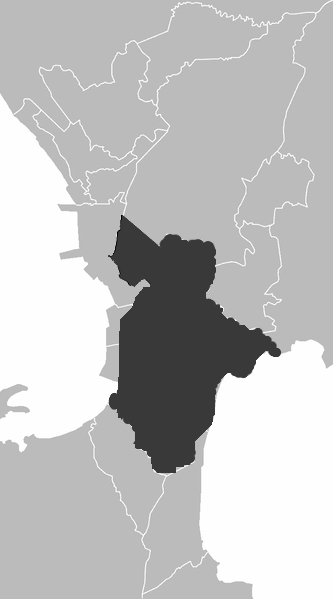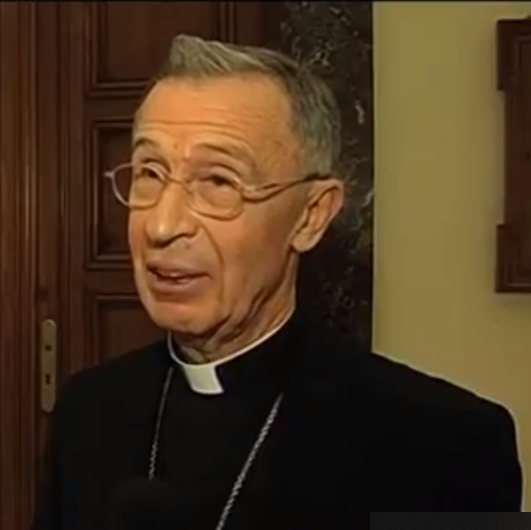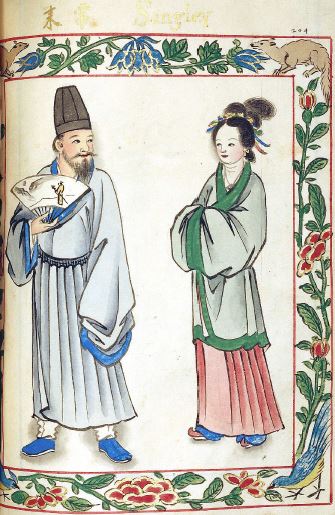|
National Shrine Of Saint Jude (Philippines)
The National Shrine of Saint Jude Thaddeus or Saint Jude Parish (originally known as Espíritu Santo Chinese Parish) is one of three Chinese parishes established by the Roman Catholic Archdiocese of Manila in Metro Manila, Philippines. The shrine holds its novena service every Thursday to Saint Jude, whose traditional color is green. Its annual ''fiesta'' is held every October 28, the Feast of Saints Jude Thaddeus and Simon the Zealot. The shrine is popular with students and those reviewing for board examinations, as Jude Thaddeus is considered the patron saint of hopeless cases. The shrine is located at J.P. Laurel Street, San Miguel, Manila which is inside the Malacañang Palace Complex. The current parish priest and shrine rector is Rev. Fr. Linus E. Nicasio, SVD. He is assisted by Rev. Fr. Christopher Ramirez, SVD and Rev. Fr. Yuhang Antonio Wang, SVD. History Background The Chinese presence in the Philippines goes back many centuries. During the Spanish colonization ... [...More Info...] [...Related Items...] OR: [Wikipedia] [Google] [Baidu] |
English Language In The Philippines
Philippine English (similar and related to American English) is any variety of English native to the Philippines, including those used by the media and the vast majority of educated Filipinos and English learners in the Philippines from adjacent Asian countries. English is taught in schools as one of the two official languages of the country, the other being Filipino ( Tagalog). Due to the influx of Filipino English teachers overseas, Philippine English is also becoming the prevalent variety of English being learned in the Far East as taught by Filipino teachers in various Asian countries such as Korea, Japan and Thailand, among others. Due to the highly multilingual nature of the Philippines, code-switching such as Taglish ( Tagalog-infused English) and Bislish (English infused with any of the Bisayan languages) is prevalent across domains from casual settings to formal situations. History Filipinos were first introduced to English when the British invaded and occupied Ma ... [...More Info...] [...Related Items...] OR: [Wikipedia] [Google] [Baidu] |
Manila
Manila ( , ; fil, Maynila, ), officially the City of Manila ( fil, Lungsod ng Maynila, ), is the capital of the Philippines, and its second-most populous city. It is highly urbanized and, as of 2019, was the world's most densely populated city proper. Manila is considered to be a global city and rated as an Alpha – City by Globalization and World Cities Research Network (GaWC). It was the first chartered city in the country, designated as such by the Philippine Commission Act 183 of July 31, 1901. It became autonomous with the passage of Republic Act No. 409, "The Revised Charter of the City of Manila", on June 18, 1949. Manila is considered to be part of the world's original set of global cities because its commercial networks were the first to extend across the Pacific Ocean and connect Asia with the Spanish Americas through the galleon trade; when this was accomplished, it marked the first time in world history that an uninterrupted chain of trade routes circling ... [...More Info...] [...Related Items...] OR: [Wikipedia] [Google] [Baidu] |
Rectory
A clergy house is the residence, or former residence, of one or more priests or ministers of religion. Residences of this type can have a variety of names, such as manse, parsonage, rectory or vicarage. Function A clergy house is typically owned and maintained by a church, as a benefit to its clergy. This practice exists in many denominations because of the tendency of clergy to be transferred from one church to another at relatively frequent intervals. Also, in smaller communities, suitable housing is not as available. In addition, such a residence can be supplied in lieu of salary, which may not be able to be provided (especially at smaller congregations). Catholic clergy houses in particular may be lived in by several priests from a parish. Clergy houses frequently serve as the administrative office of the local parish, as well as a residence. They are normally located next to, or at least close to, the church their occupant serves. Partly because of the general conservati ... [...More Info...] [...Related Items...] OR: [Wikipedia] [Google] [Baidu] |
Santa Cruz, Manila
Santa Cruz is a district in the northern part of the City of Manila, Philippines, located on the right bank of the Pasig River near its mouth, bordered by the districts of Tondo, Binondo, Quiapo, and Sampaloc, as well as the areas of Grace Park and Barrio San Jose in Caloocan and the district of La Loma in Quezon City. The district belongs to the 3rd congressional district of Manila. History Spanish colonial era Prior to the arrival of the Spanish conquistadors to the Philippine Islands, the district of Santa Cruz was partly a marshland, patches of greeneries, orchards and partly rice fields. A Spanish expedition in 1581 claimed the territory and awarded to the Society of Jesus whose members are known as 'Jesuits'. The Jesuits built the first Roman Catholic church in the area where the present Santa Cruz Parish stands on June 20, 1619. The Jesuits enshrined the image of the Our Lady of The Pillar in 1643 to serve the pre-dominantly Chinese residents in the area. The image ... [...More Info...] [...Related Items...] OR: [Wikipedia] [Google] [Baidu] |
Quezon City
Quezon City (, ; fil, Lungsod Quezon ), also known as the City of Quezon and Q.C. (read in Filipino as Kyusi), is the List of cities in the Philippines, most populous city in the Philippines. According to the 2020 census, it has a population of 2,960,048 people. It was founded on October 12, 1939, and was named after Manuel L. Quezon, the List of presidents of the Philippines, second president of the Philippines. The city was intended to be the Capital of the Philippines, national capital of the Philippines that would replace Manila, as the latter was suffering from overcrowding, lack of housing, poor sanitation, and traffic congestion. To create Quezon City, several barrios were carved out from the towns of Caloocan, Marikina, San Juan, Metro Manila, San Juan and Pasig, in addition to the eight vast estates the Philippine government purchased for this purpose. It was officially proclaimed as the national capital on October 12, 1949, and several government departments and i ... [...More Info...] [...Related Items...] OR: [Wikipedia] [Google] [Baidu] |
Pasay
Pasay, officially the City of Pasay ( fil, Lungsod ng Pasay; ), is a 1st class Cities of the Philippines#Legal classification, highly urbanized city in the Metro Manila, National Capital Region of the Philippines. According to the 2020 census, it has a population of 440,656 people. Due to its location just south of Manila, Pasay quickly became an urban town during the History of the Philippines (1898–1946), American colonial period. History Early history In local folk history about the period before the arrival of Spanish colonizers, Pasay is said to have been part of Namayan (sometimes also called Sapa), a confederation of Barangay state, barangays which supposedly controlled territory stretching from Manila Bay to Laguna de Bay, and which, upon the arrival of the Spanish, eventually became known as Santa Ana de Sapa (modern day Santa Ana, Manila). According to these legends, the ruler of Namayan bequeathed his territories in what is now Culi-culi, Pasay, and Baclaran t ... [...More Info...] [...Related Items...] OR: [Wikipedia] [Google] [Baidu] |
Paco, Manila
Paco, formerly known as Dilao, is a Manila#Barangays and districts, district of Manila, Philippines located south of the Pasig River, and San Miguel, Manila, San Miguel, west of Santa Ana, Manila, Santa Ana, southwest of Pandacan, Manila, Pandacan, north of Malate, Manila, Malate, northwest of San Andres, Manila, San Andres Bukid, and east of Ermita, Manila, Ermita. According to the 2020 census, it has a population of 79,839 people. History Paco was known as Dilao because of the Amaryllis plants that were once plentiful in this district. Dilao or ''dilaw'' is a Tagalog language, Tagalog word for the color yellow. Although, some sources say, it was named Dilao or "Yellow Plaza" by the Spain, Spanish settlers because of the Japanese migrants who lived there, describing their physiognomy. Spanish Franciscan missionaries founded the town of Paco as early as 1580. It was a town part of the province of Manila (province), Tondo, which was later renamed Manila in 1859, until 1901. Th ... [...More Info...] [...Related Items...] OR: [Wikipedia] [Google] [Baidu] |
Consistorial Congregation
In the Roman Curia, a congregation ( lat, Sacræ Cardinalium Congregationes) is a type of department of the Curia. They are second-highest-ranking departments, ranking below the two Secretariats, and above the pontifical councils, pontifical commissions, tribunals and offices. Originally, congregations were select groups of cardinals drawn from the College of Cardinals, commissioned to take care of some field of activity that concerned the Holy See. Today, as a result of a decision of the Second Vatican Council, members include diocesan bishops from diverse parts of the world who are not cardinals. Each congregation also has a permanent staff. Each congregation is led by a Prefect, who is usually a cardinal.René Metz, ''Twentieth Century Encyclopedia of Catholicism, Vol. 80: What is Canon Law?'' (New York: Hawthorn Books, 1960), pp. 99-101 Until recently, a non-cardinal appointed to head a congregation was styled pro-prefect until made a cardinal. This practice has been abando ... [...More Info...] [...Related Items...] OR: [Wikipedia] [Google] [Baidu] |
Rufino Santos
Rufino Jiao Santos (August 26, 1908 – September 3, 1973) was the 29th Archbishop of Manila from February 10, 1953, until his death on September 3, 1973, and was the first Filipino elevated to the rank of cardinal. Biography Born in Barangay Sto. Niño, Guagua, Pampanga, Santos was the fourth of seven children of Gaudencio Santos, an overseer of farmland near Mount Arayat, and Rosalia Jiao y Romero. Rufino's three elder brothers were Manuel, Emiliano, and Quirino; his three sisters were Clara, Jovita, and Exequiela. Santos, nicknamed "Pinong", grew up in a house located 30 meters from what is now the Immaculate Conception Parish. He was active in church activities as an acolyte, and was later a choir member of the Manila Cathedral School. Two factors influenced his priestly vocation: his stint as an altar server, and the encouragement of Father Jose Tahon, Manila Cathedral's parish priest. He entered San Carlos Seminary on July 25, 1921, and earned a baccalaureate in canon law i ... [...More Info...] [...Related Items...] OR: [Wikipedia] [Google] [Baidu] |
Binondo Church
Binondo Church, also known as the Minor Basilica and National Shrine of Saint Lorenzo Ruiz and formerly known as Our Lady of the Most Holy Rosary Parish ( es, Basílica Menor de San Lorenzo Ruiz y Parroquia de Nuestra Señora del Santísimo Rosario), is located in the District of Binondo, Manila fronting Plaza San Lorenzo Ruiz, in the Philippines. This church was founded by Dominican priests in 1596 to serve their Chinese converts to Christianity. The original building was destroyed in 1762 by British bombardment. A new granite church was completed on the same site in 1852 however it was greatly damaged during the Second World War, with only the western façade and the octagonal belfry surviving. Saint Lorenzo Ruiz, who was born of a Chinese father and a Filipino mother, trained in this church and afterwards went as a missionary to Japan, where he and his companions were martyred for refusing to renounce Christianity. Lorenzo is the Philippines' first saint, and was canonized by P ... [...More Info...] [...Related Items...] OR: [Wikipedia] [Google] [Baidu] |
Hokkien
The Hokkien () variety of Chinese is a Southern Min language native to and originating from the Minnan region, where it is widely spoken in the south-eastern part of Fujian in southeastern mainland China. It is one of the national languages in Taiwan, and it is also widely spoken within the Chinese diaspora in Singapore, Indonesia, Malaysia, the Philippines and other parts of Southeast Asia; and by other overseas Chinese beyond Asia and all over the world. The Hokkien 'dialects' are not all mutually intelligible, but they are held together by ethnolinguistic identity. Taiwanese Hokkien is, however, mutually intelligible with the 2 to 3 million speakers in Xiamen and Singapore. In Southeast Asia, Hokkien historically served as the '' lingua franca'' amongst overseas Chinese communities of all dialects and subgroups, and it remains today as the most spoken variety of Chinese in the region, including in Singapore, Malaysia, Indonesia, Philippines and some parts of Indochina (part ... [...More Info...] [...Related Items...] OR: [Wikipedia] [Google] [Baidu] |
Sangley
Sangley (English plural: ''Sangleys''; Spanish plural: ''Sangleyes'') and Mestizo de Sangley (Sangley mestizo, ''mestisong Sangley'', ''chino mestizo'' or Chinese mestizo) are archaic terms used in the Philippines to describe a person of pure overseas Chinese ancestry, or ''Mestizo de Sangley,'' which are persons of mixed Chinese and native Filipino ancestry (the latter were referred to in es, Indio, lit=Indian, as natives of the East Indies) respectively during the Spanish Colonial Era in the Philippines. The Sangley Chinese were ancestors to both modern Chinese Filipinos and modern Filipino mestizo descendants of the ''Mestizos de Sangley''. (These were Chinese mestizos, mixed descendants of Sangley Chinese and native Filipinos), who were ''mestizos'' (mixed peoples) under the Spanish Colonial Empire, classified together with other Filipino mestizos. The Spanish had such categories as ''Mestizos de Español'' (descendants of colonial-era ethnic Spanish and native-born Fi ... [...More Info...] [...Related Items...] OR: [Wikipedia] [Google] [Baidu] |






.png)
